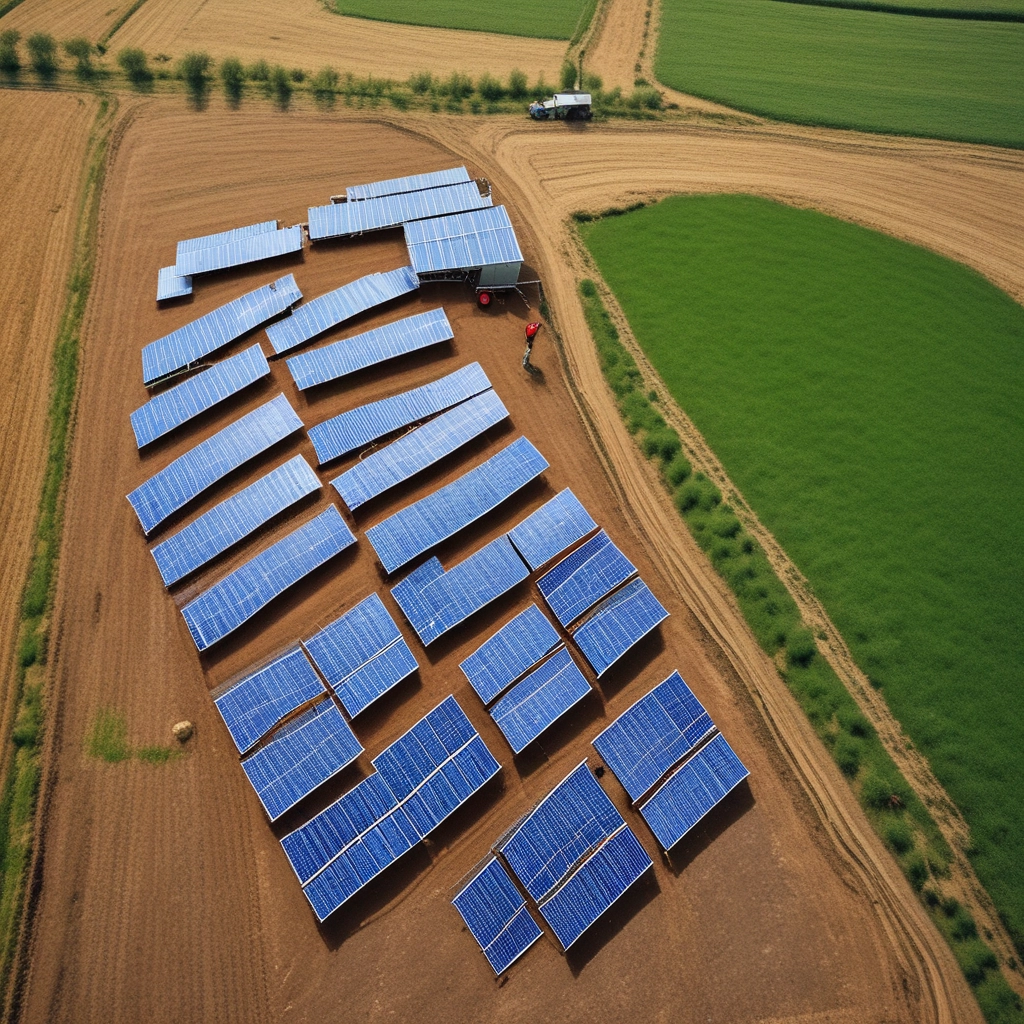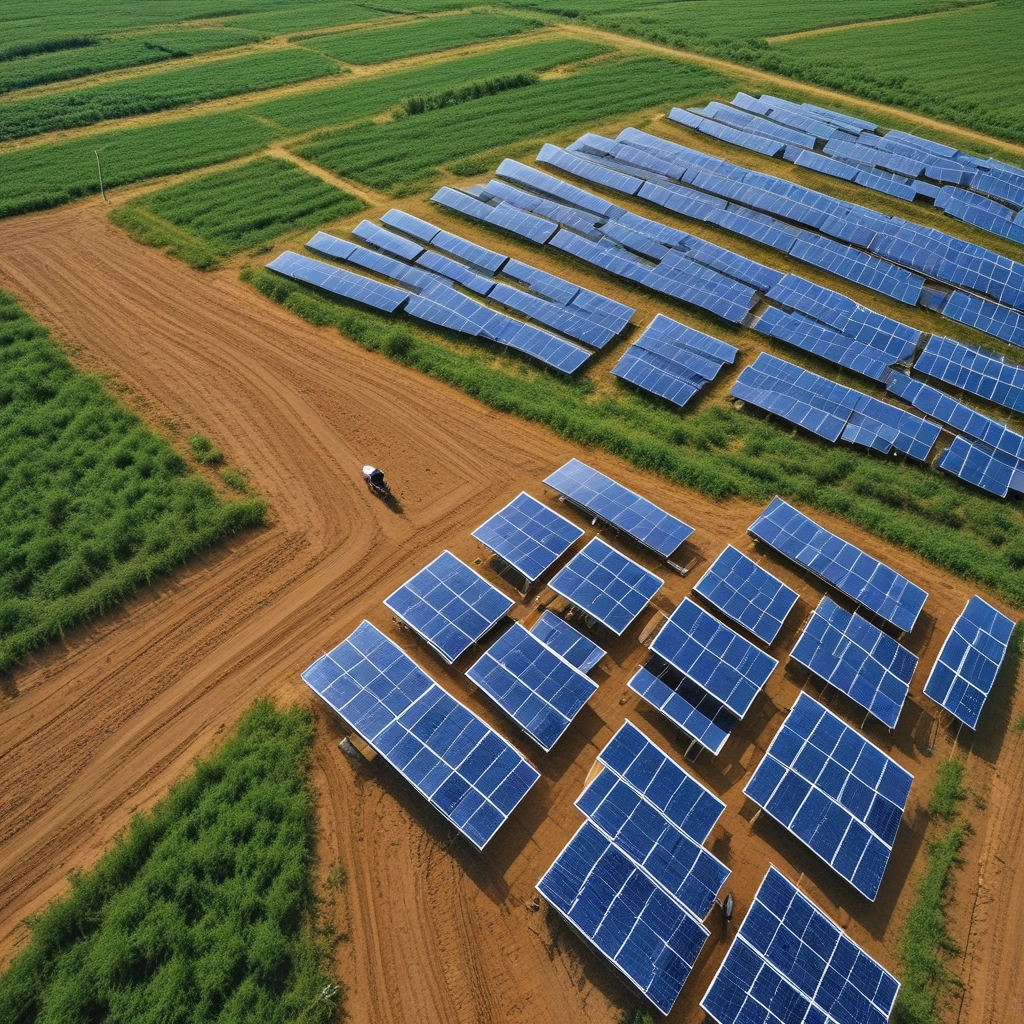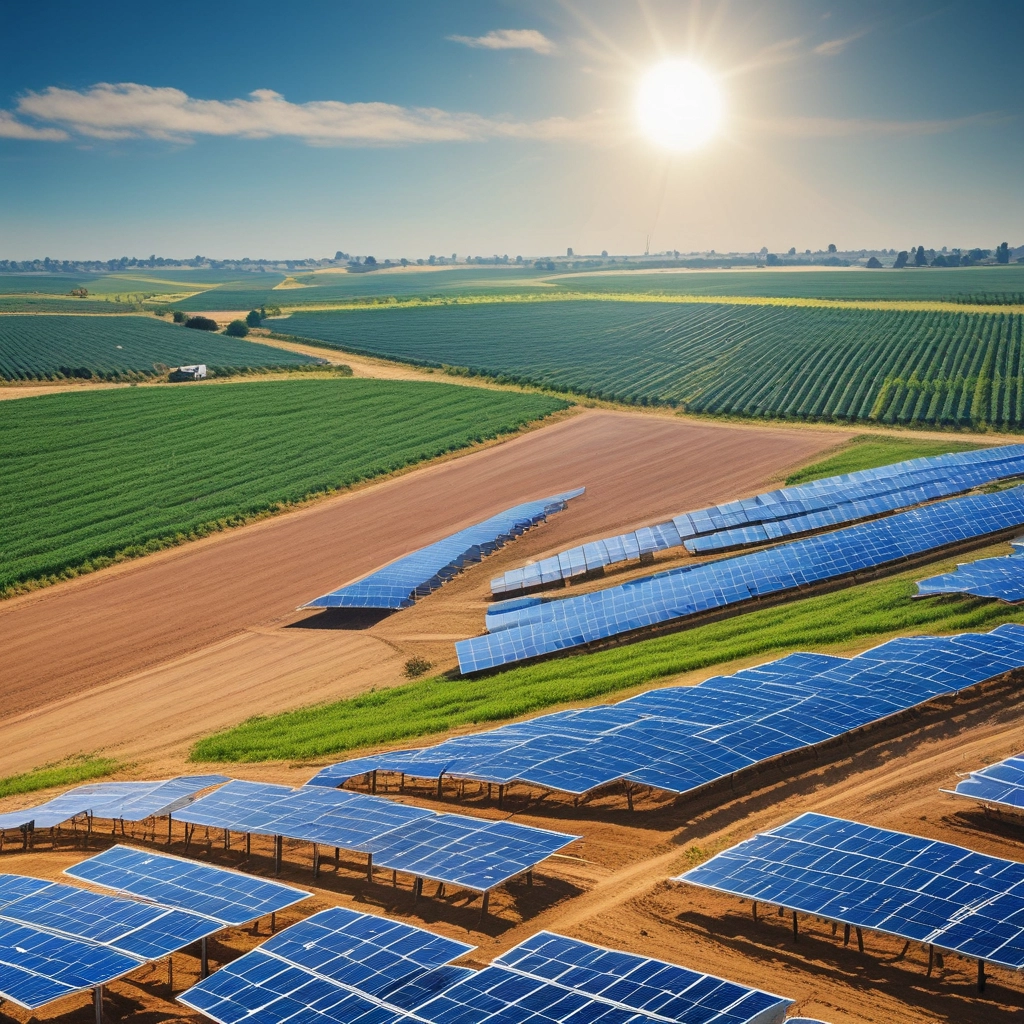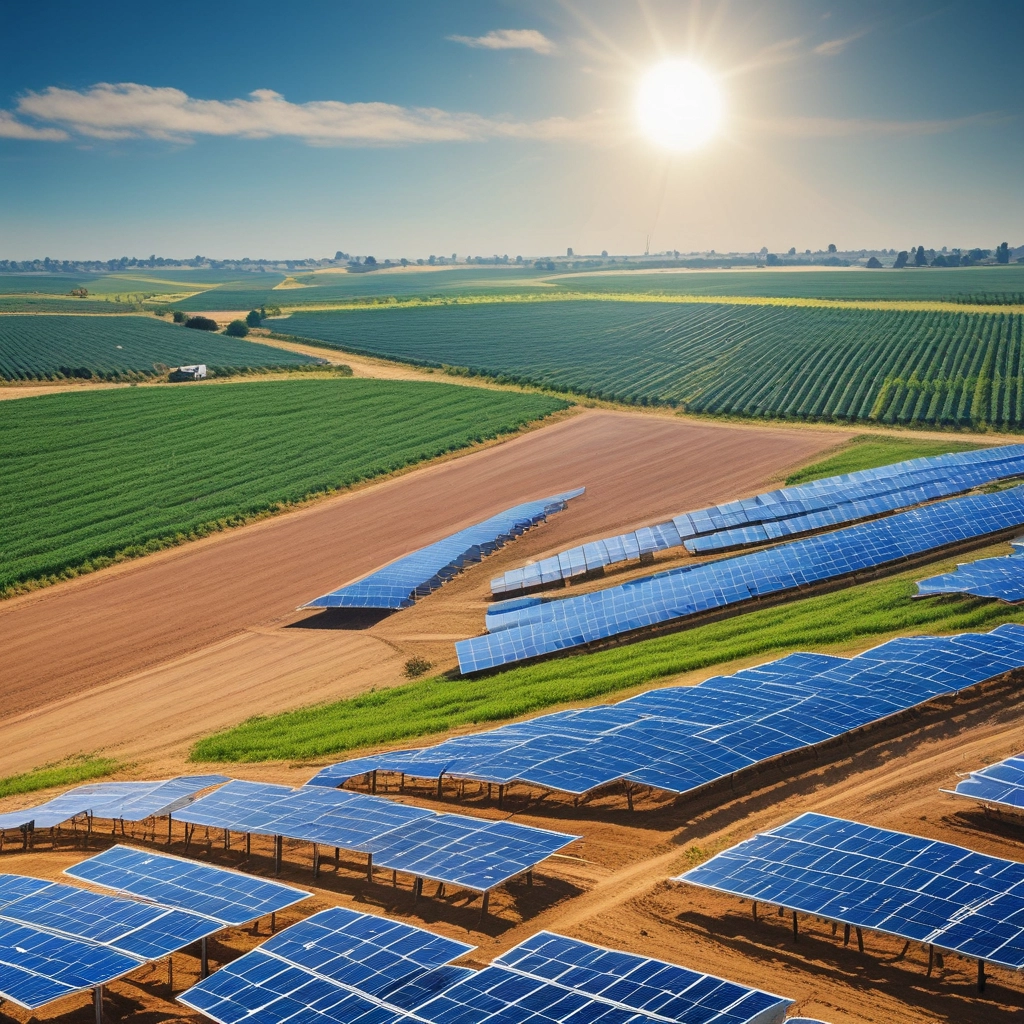
Introduction to Renewable Energy
Renewable energy has emerged as a crucial component in the global effort to combat climate change and reduce dependence on fossil fuels. As the planet grapples with rising temperatures and extreme weather events, the transition to sustainable energy sources is more vital than ever. Renewable energy sources offer a viable solution to these pressing environmental challenges by significantly decreasing carbon emissions and promoting a cleaner, healthier atmosphere.
There are several distinct types of renewable energy sources, each harnessing natural phenomena to generate sustainable power. Solar energy, derived from sunlight, is captured using photovoltaic cells or solar thermal systems. Wind energy utilizes the kinetic energy of moving air, converting it into electricity through wind turbines. Hydroelectric power leverages the flow of water, typically from rivers or dams, to produce energy. Geothermal energy taps into the Earth’s internal heat to generate electricity and provide direct heating. Biomass energy involves the conversion of organic materials, such as plant and animal waste, into fuel or electricity.
The increasing global demand for clean energy solutions has accelerated advancements in renewable technologies, making them more accessible and cost-effective. Governments and organizations are recognizing the importance of shifting towards these sustainable energy sources to mitigate the effects of climate change and ensure energy security for future generations. This shift not only supports environmental preservation but also contributes to economic growth by creating new jobs in the renewable energy sector.
As we explore the top renewable energy companies leading the charge in this green revolution, it is essential to understand the context in which they operate. Their innovations and advancements are pivotal in driving the widespread adoption of renewable energy, ultimately helping to forge a sustainable future for the planet.
Criteria for Selection of Top Companies
The renewable energy sector has experienced tremendous growth in recent years, leading to a competitive landscape characterized by numerous influential players. To determine the top 10 renewable energy companies leading the charge in the green revolution, a comprehensive set of criteria was established. This ensures a fair and robust evaluation of each company’s performance and impact within the industry.
One of the primary factors considered is market capitalization. A company’s market cap provides insights into its financial health and the confidence of investors in its potential for growth in the renewable sector. Firms with higher market caps are often seen as leaders, reflecting their substantial resources for innovation and expansion.
In addition to financial metrics, overall influence in the renewable energy industry was crucial in our evaluation. This encompasses each company’s role in shaping policies, partnerships, and public perception regarding renewable solutions. Companies that actively engage with regulatory bodies and set industry standards emerge as pivotal players.
Innovation in technology is another significant criterion. Firms that continually invest in research and development to advance renewable energy solutions not only enhance their production capabilities but also contribute to the industry’s progress as a whole. Therefore, assessing a company’s commitment to modernizing technology is essential.
Production capacity and efficiency also serve as benchmarks in our selection process. Companies with substantial production volumes demonstrate their ability to meet growing energy demands while promoting sustainability. Geographic reach is equally important, as companies operating in diverse locations can mitigate risks and exploit new market opportunities.
Lastly, contributions to sustainability goals are a key consideration. Companies that actively pursue renewable initiatives and demonstrate measurable progress in reducing carbon footprints and creating sustainable energy solutions stand out. Collectively, these criteria guide the identification of the leading companies driving change in the renewable energy landscape.
The Top 10 Renewable Energy Companies
1. **NextEra Energy**: Headquartered in Juno Beach, Florida, NextEra Energy is one of the largest renewable energy companies in the world, primarily focusing on wind and solar power. With a revenue exceeding $20 billion and over 14,000 employees, the company is a leader in sustainable energy production. Notable projects include the world’s largest solar power facility, which significantly contributes to reducing carbon emissions in the U.S.
2. **Iberdrola**: A major player from Spain, Iberdrola has made significant investments in wind energy, positioning itself as a global leader in renewable sources. The company serves more than 34 million customers and has a revenue of approximately €34 billion. Its commitment to green initiatives is showcased through innovations such as offshore wind farms, enhancing the transition to a sustainable energy framework.
3. **Ørsted**: Originating from Denmark, Ørsted specializes in offshore wind energy and is recognized for its advancements in renewable solutions. With revenues of around $10 billion, Ørsted employs more than 6,000 individuals. The company has transformed from fossil fuel reliance to becoming a model for green energy, notably with its Hornsea project, the largest offshore wind farm globally.
4. **Enel Green Power**: An Italian multinational company, Enel Green Power focuses on a diverse range of renewable energy sources, including solar, wind, and hydroelectric power. Generating over €10 billion in revenue and employing around 8,000 staff, its projects span across Europe, the Americas, and Africa. The company is committed to achieving carbon neutrality, showcased through various solar plant developments.
5. **Siemens Gamesa**: This Spanish-based company is a leading wind turbine manufacturer, providing crucial technology for the renewable energy sector. With annual revenues near €10 billion and a workforce of about 26,000, Siemens Gamesa has played a vital role in the wind energy market by enhancing turbine efficiency and implementing sustainable practices.
6. **Vestas Wind Systems**: Vestas, based in Denmark, is one of the largest wind turbine manufacturers in the world, focusing exclusively on sustainable energy solutions. The company operates in over 80 countries, with revenues of over €14 billion and more than 25,000 employees. Their commitment to research and development has resulted in cutting-edge turbine designs that bolster wind energy efficiency.
7. **Brookfield Renewable Partners**: Based in Canada, Brookfield Renewable Partners manages a diverse portfolio of renewable power assets. With revenues of approximately $3 billion and more than 100 specialists on board, the company’s investments span hydro, wind, and solar energy, symbolizing a holistic approach to sustainability in energy.
8. **First Solar**: First Solar, headquartered in Arizona, specializes in manufacturing photovoltaic solar modules. It boasts revenues of around $3 billion and employs roughly 6,000 people. Its innovative thin-film solar technology has made significant strides in efficient energy generation, contributing to a more sustainable future through solar energy.
9. **Canadian Solar**: As one of the world’s largest solar power companies, Canadian Solar operates on a global scale, with a strong emphasis on innovation and sustainability. Generating approximately $3 billion in revenue and employing around 14,000 staff, the firm focuses on solar photovoltaic modules and projects that continue to drive down costs for renewable energy generation.
10. **Duke Energy Renewables**: Part of Duke Energy, this division is focused on developing renewable energy solutions, chiefly wind and solar facilities. With a revenue of around $24 billion and a commitment to sustainable practices, Duke Energy’s renewable initiatives contribute significantly to the energy landscape, showcasing the potential for large scale sustainable power generation.
These ten companies exemplify the drive towards a more sustainable future in energy consumption. Their unique contributions and initiatives illustrate the unprecedented growth and innovation in the renewable energy sector.
The Future of Renewable Energy Companies
The renewable energy sector is experiencing a transformative phase as it navigates emerging trends and future prospects, shaping the landscape for leading companies in this industry. Innovations in technology play a pivotal role in enhancing the efficiency and cost-effectiveness of renewable energy solutions. For instance, advancements in solar panel technology, including bifacial panels and energy storage systems, are driving increased adoption of solar energy across various sectors. Similarly, improvements in wind turbine design and offshore wind farms are set to significantly boost energy output and capacity.
Financing trends are also evolving, with investors recognizing the growth potential of renewable energy companies. Green bonds and impact investing are gaining traction, providing much-needed capital for projects focused on sustainability. Alongside financial shifts, supportive government policies are crucial in promoting renewable energy. Various countries are implementing incentives and regulations to support the growth of the clean energy sector, such as tax credits, feed-in tariffs, and renewable portfolio standards. Such frameworks encourage investments and facilitate market entry for innovative companies.
However, the renewable energy industry faces challenges that could impact its growth trajectory. Supply chain issues, exacerbated by global events, have led to increased material costs and bottlenecks in project execution. Moreover, as more players enter the market, competition intensifies, compelling established companies to innovate continuously. Despite these challenges, the consensus remains that investment in renewable energy solutions is vital. With increasing awareness of climate change and the need for sustainable energy, the future appears promising for renewable energy companies committed to driving the green revolution.










